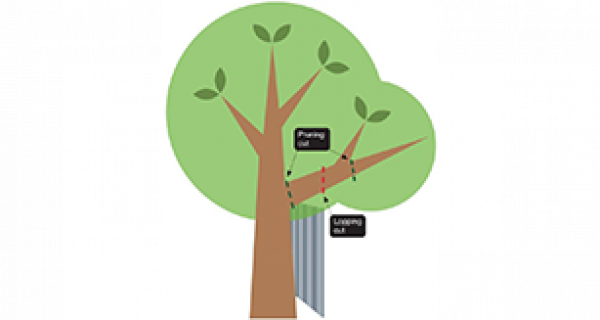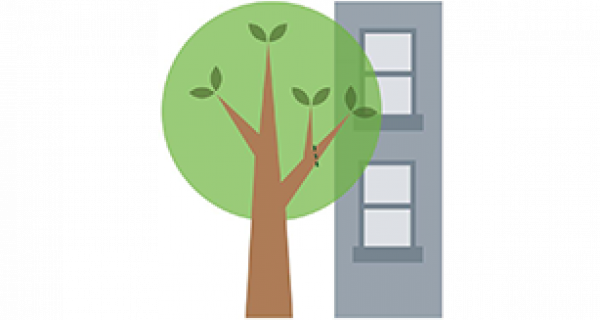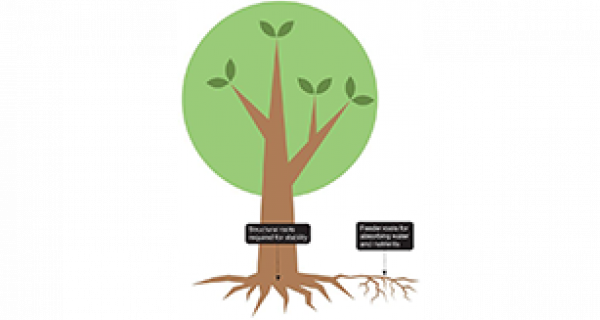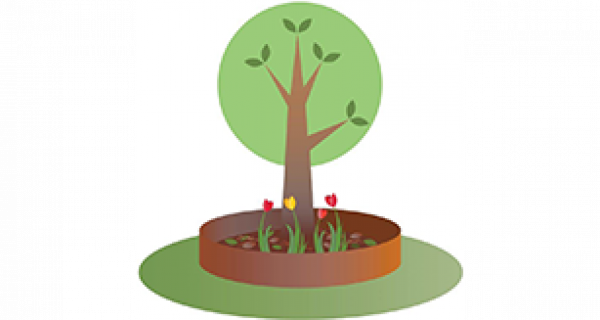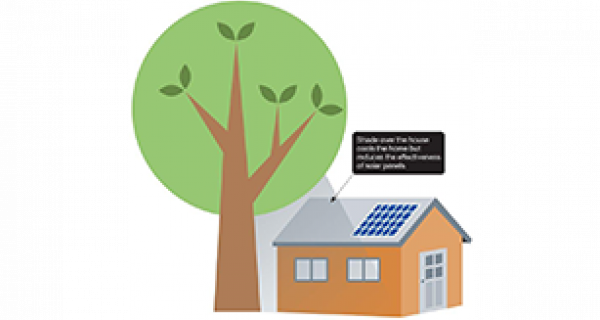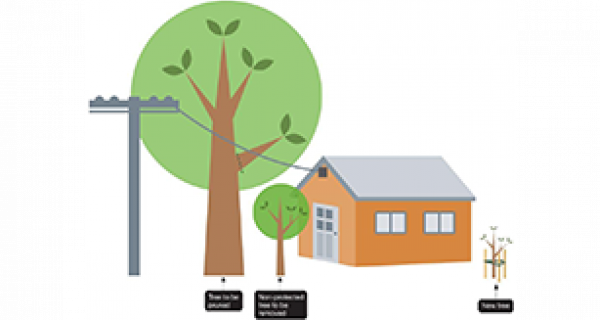In Whitehorse we have tree protection controls in place to ensure our urban canopy is properly supported. One element of our tree protection controls refers to lopping and pruning.
For trees protected under an SLO (Significant Landscape Overlay) or VPO (Vegetation Protection Overlay):
- Lopping a tree requires a planning permit
- Removal of a tree requires a planning permit unless the tree is dead, dying or dangerous to the satisfaction of the relevant authority
- Pruning a tree that results in the loss of 10% or more of the canopy requires a planning permit.
The difference between lopping and pruning
Lopping
Lopping is the removal of stems or limbs in between a node - or growing point. It usually causes the plant to produce bushy growth behind the cut point at the next node. This bushy growth is often poorly attached to the main stem or trunk and can make the tree dangerous. Lopping is bad for the health of trees.
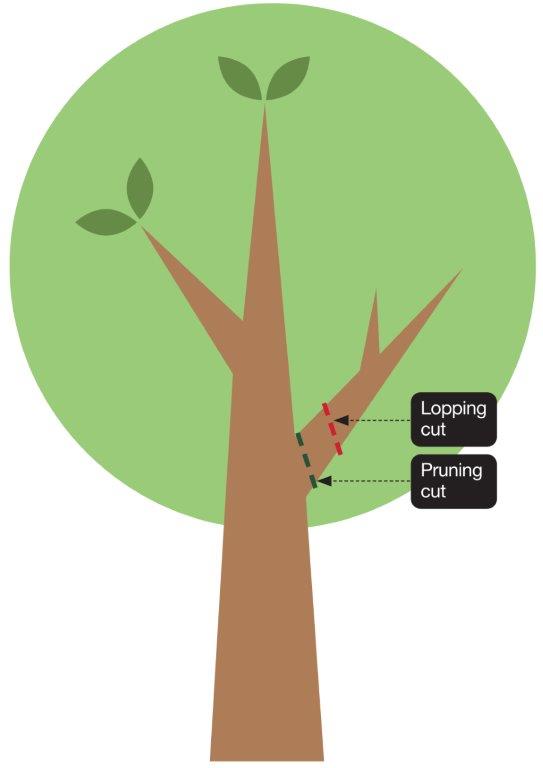
Example
Lopping involves a cut in between nodes.
In the diagram you can see a lopping cut location in red and a pruning cut location in green. The location of the lopping cut will make it very difficult for the tree to seal the wound, potentially leaving it exposed to fungal infection.
A lopping cut will cause many trees to grow bushy growth from the branch stump that may be unsightly and potentially dangerous.
All lopping of protected trees requires a planning permit but really, in almost all cases, lopping should never be done.
Pruning
Pruning is the removal of a stem or limb at the “branch bark” or “stem bark ridge” and allows the tree to grow over the wound quickly. It does not result in bushy, poorly attached new growth. Arborists use structures on the trees such as the branch bark ridge or the branch collar when deciding where to cut a branch. The Australian Standard AS4373-2007 Pruning of Amenity Trees outlines this in detail.
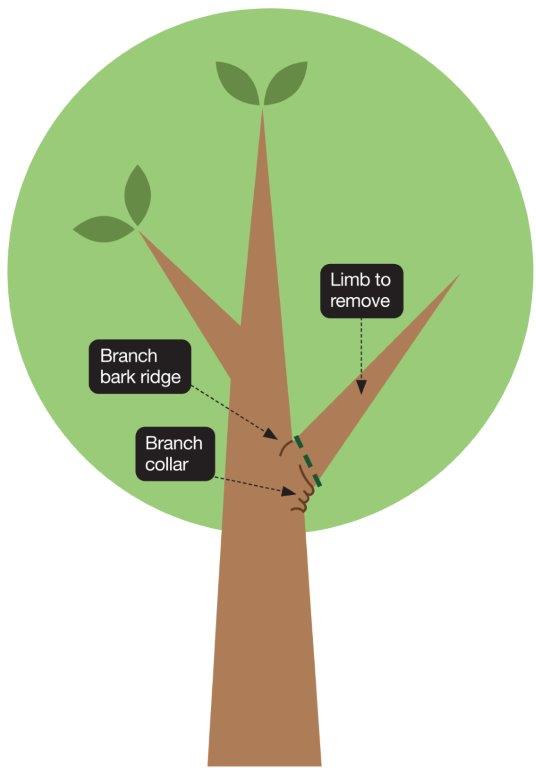
Example
In this diagram, a lower limb is proposed to be pruned. The reason for this is because it has become over extended and there is concern it may snap and tear the bark on the trunk causing a wound.
The location of the branch collar is quite clear on this diagram as a swelling at the base of the limb. This contains the tissue that will help grow over the wound so should never be cut. Instead the cut should be made just outside the collar. If the collar cannot be seen, the branch bark ridge, a wrinkle in the bark on the trunk is used as a guide. Usually, the angle of this ridge is the mirror of the angle made by the collar and this biological clue can also help arborists decide where the cut should be.
The foliage on this branch comprises less than 10% of the tree’s canopy so will not severely impact its ability to photosynthesize.








